Champagne Jacques Selosse
Visiting the Champagne
region, part 3: a conversation and tasting with Anselme Selosse
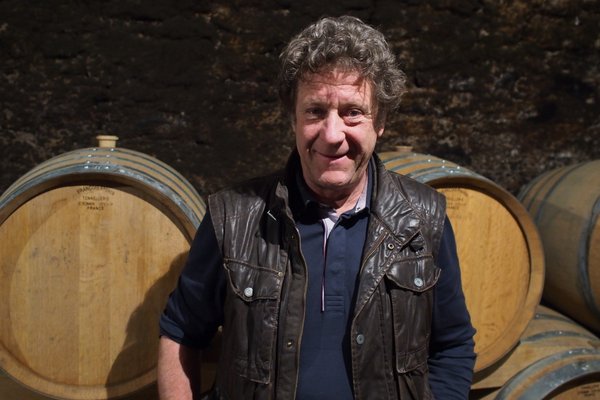
Anselme Selosse
Selosse is different. And brilliant. It was great to be able to
visit this celebrated grower, who in turn has influenced and
inspired many more growers to begin making their own,
terroir-expressive wines.
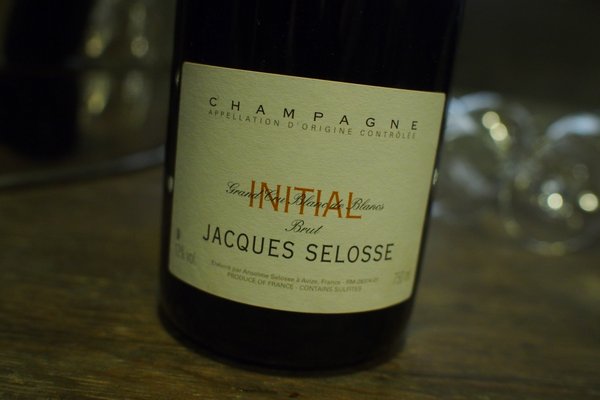
Anselme's father, Jacques, established the domaine in 1949, and
Anselme came to work here in 1974. In his third vintage, the very
hot 1976, he figured that he didn't need to add so much sugar. The
resulting wines were a revelation to him, and he began his journey
towards the terroir wines he makes today. Holdings are 7.5 hectares,
mostly Chardonnay from Grand Cru sites in the Côte des Blancs, but
also with some Pinot Noir in top sites on the Montagne des Reims.
Production averages 58 000 bottles a year.
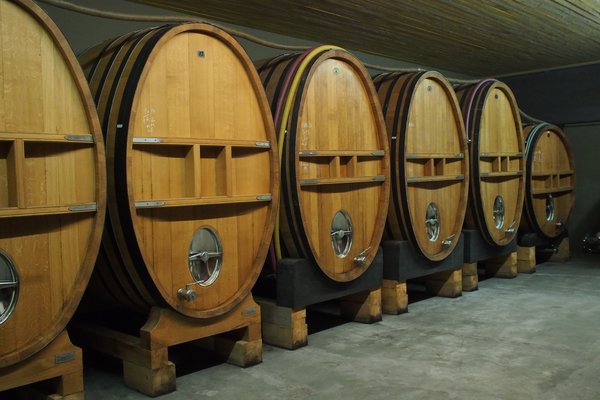
A recent venture has been the Les Avisés hotel and restaurant. (We
lunched here before meeting with Anselme; it was fabulous.) This
came about because Anselme and Corinne were scouting out new cellar
space. They found the cellars of a defunct Champagne house,
Bricout-Delbeck, which had closed in 2003. The large town house
above the cellars seemed ideal for a hotel and restaurant, so they
pursued this project.
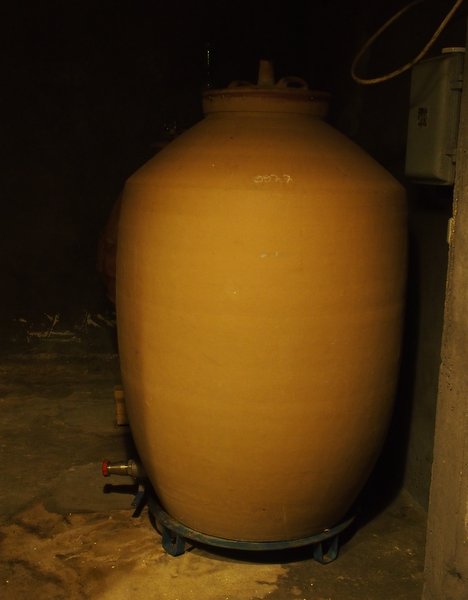
All the base wines are fermented in wood (or, more recently,
terracotta, above, which Anselme has just begun using with the 2015
vintage). Juice goes straight from the press either to barrel or
terracotta. 'For me it is not possible to make wine where the juice
hasn't been in oak.'
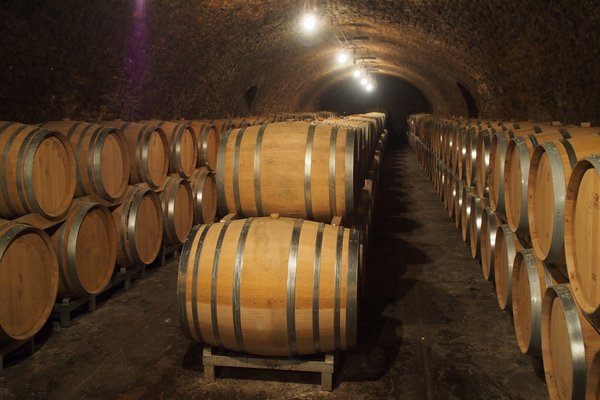
The sediments are resuspended and all the solids go to barrels. 'I
don't lose any sediments: it is not allowed,' says Anselme. There is
no malolactic fermentation here. Interestingly, no yeast is added,
even at tirage stage. At the end of alcoholic fermentation Anselme
takes juice and freezes it. The yeast sleeps and four weeks before
bottling I take it out and restart it.
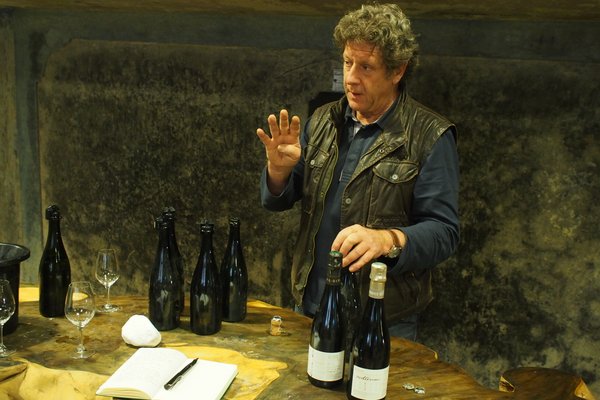
Anselme is quite poetic and philosophical about his wines. He
describes the wine making process as a type of 'burning'. '200g of
solids produce 10 g at the end: it is burned. You feel the mineral
salts in the mouth.'
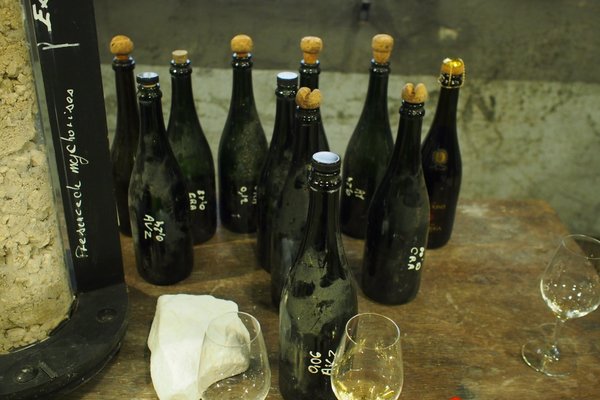
He continues. 'Roots take up water with mineral salts at the
beginning. Then it becomes sap. Then photosynthesis produces organic
products. If I want a mineral part, I burn the organic part, and
after the organic parts burn the rest comes from the soil. I am left
with the mineral part. It is like a whisky maker; the most important
element is the water.'
'Put cement outside and after 2 years small plants grow on it. But
if you put the cement into water, it doesn't dissolve. I start as
dust and end as dust. It is the same with wine.'
'When I plant a vine at a place the roots take a specific water and
produce a specific sap,' he explains. 'It is not better.' I think by
this he means that the sap produced by the plant being in a specific
site is unique to that place, and that rather than finding that one
place is better than another, it is just true to that place.
Anselme is full of interesting thoughts. 'For me Champagne is not
the best sparkling wine. There are no best sparkling wines. When
there are many people, who is the best? Each personality is its own.
There is no universal best. The most important element is where the
product burns. If it burns at one place, the characteristics stay in
one place.'
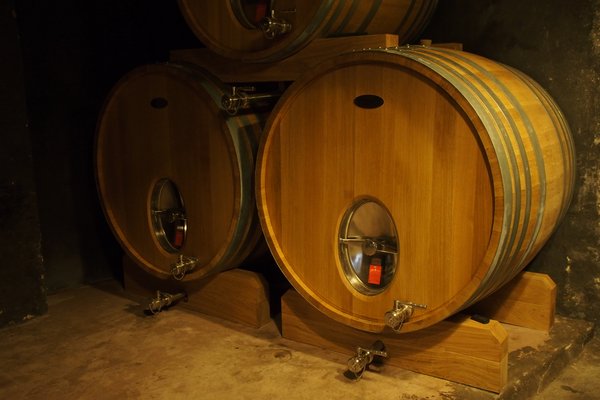
Here's another one. 'For me, gastronomy is just in the mouth, it's
not smell. If we add products, we change the smell. It is in the
mouth.'
I asked him about whether it's possible to taste the place in a
wine. What is the influence of the soil? 'When I taste water with
sodium it is salty, with magnesium it is bitter, with calcium it is
fresh and with potassium it is heavy.'
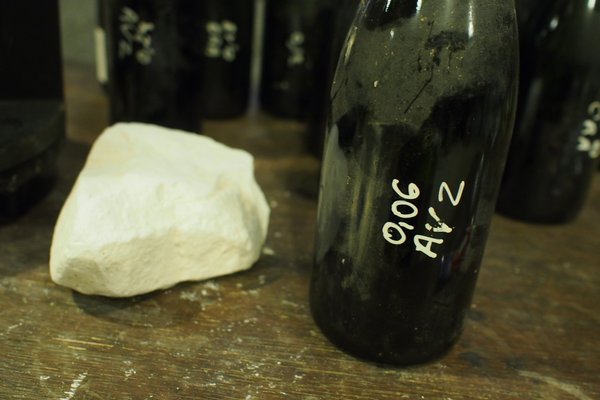
'For me, chalk is a very specific stone. It is calcareous, but not
Jurassic, like Burgundy. Jurassic is crystallized calcium carbonate.
Chalk is phytoplankton with microscopic rings. Champagne comes from
the chalk. I feel the same taste in Andalucia with the albariza. I
feel a saltiness.'
Anselme also talks about intervention in winemaking. 'The most
important thing is not what I do but what I don't do,' he says. 'If
I don't work it is a more natural product, if I work it is a
normalized product.'
He uses sulfur dioxide where it is needed, but not at pressing,
where he just uses dry ice. He'll use sulfites if the skins are very
thin or there is botrytis. He used some in 2014 because of the
Drosophila problem.
And he also thinks that there's something about 'northern' and
'southern' philosophies and approaches. 'There are two schools in
Europe, north and south. The north is blended, and the most
important person is the chef du cave. But for Burgundy and Barolo
the most important person is the winegrower. If I want to buy a car,
I want a good resistant car, economic, beautiful. A German car is
good. A product of the north. But perhaps I hear the Ferrari or
Maserati engine and I buy it. For some quality is objective, for
others it is subjective.'
'For me, there is no winemaking,' says Anselme. 'I am just a butler,
I am not a boss.'
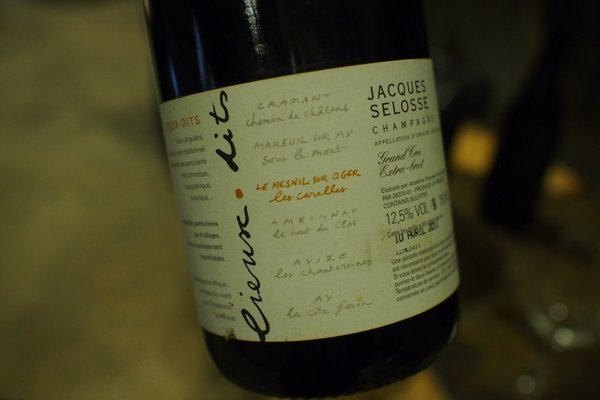
Champagne Jacques Selosse Initiale NV France
This comes from the foot of the slope, where there is more fine
clay. This wine is from 2009/8/7 and is Chardonnay from Avize,
Cramant and Oger, dosage 1.3 g/l. Disgorged December 2015. Intense,
bold and toasty. Nutty with fine spices. Powerful, rich and
concentrated on the palate with a spicy matchstick edge and some
toasty richness. Mineral, salty and intense with pear, ripe apple
and citrus fruit. Incredible presence to this wine with is fine,
persistent and complex. 96/100
Champagne Jacques Selosse VO NV France
This
stands for Version Originale, and it's from poorer soils higher up
the slope, based on vintages 2009/8/7.
'For me this is the chalk
speaking: the language of chalk,'
says Anselme Selosse. Dosage is
0.7 g/litre. Very fine aromatic nose with lovely citrus fruits,
herbs, ripe apples. So linear and pure. Lemony, intense and mineral
with great acidity. There are lots of dimensions here.
'For this
wine there is no smile,'
says Anselme.
'It's Cistercian, not
Benedictine.'
So fine and linear with amazing structure. 97/100
(04/16)
Champagne Jacques Selosse 'Les Carelles' Le Mesnil Sur Oger
Grand Cru NV France
This is a blend including all
vintages from 2003-2009. It's from south-facing slopes. Complex nose
of toast, lemons and herbs, with some citrus peel and fine spices.
The palate is structured and powerful with taut toast, spice and
citrus notes. Pithy and linear on the finish with great acidity and
some matchstick and smoke notes. Very intense, with some pithy
bitterness. Very savoury, structured and gastronomic. 95/100
Champagne Jacques Selosse 'Sous Le Mont' Mareuil sur Ay
Grand Cru NV France
Contains all the vintages from 2004-2009. Zero dosage. Full yellow
colour, with a distinctive nutty, pear fruit nose. Sweet with a
touch of melon. Powerful, lively, distinctive palate is fresh with
minerals, lemons and a zippy, tart, bitter finish. Anselme says that
the bitterness comes from the magnesium carbonate in the soils of
this plot, which makes it very good with duck. Muscular but with
some sweet fruit, combining the sweet and savoury to good effect.
95/100
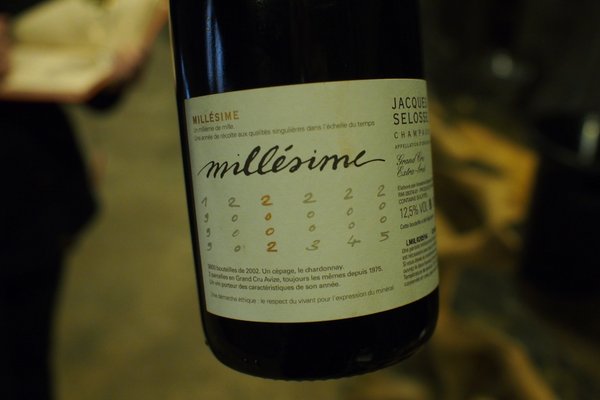
Champagne Jacques Selosse Vintage 2005 France
Disgorged in December 2014, dosage 0.7 g/litre. Concentrated with
bold, intense pear and peach fruit. This has a broad, smooth, linear
sweet fruit core. Quite luxurious with real intensity and depth.
Sweet pear and white peach fruit. Such a drive to this wine. Linear
and fine with amazing focus and precision. 97/100
Champagne Jacques Selosse Vintage 2002 France
Along with 1996, 1999 and 2013, 2002 was one of the vintages where
no sulfites were added. Disgorged 2 years ago. Full yellow colour.
Notes of nuts and honey on the nose with some ripe apples. Very
lively and linear with fresh acidity and a keen citrus drive: very
keen, lemony and bright with a juicy quality. Mineral, too, with a
savoury edge. Lovely wine. 95/100
Champagne Jacques Selosse Vintage 2003 France
Very intense, sweet nose with fudge and toffee hints. The palate has
sweet toffee notes but also lively, dense citrus and pear fruit.
Salty, with some lovely nutty notes. Very rich but still has
complexity and some freshness, with real intensity. 93/100
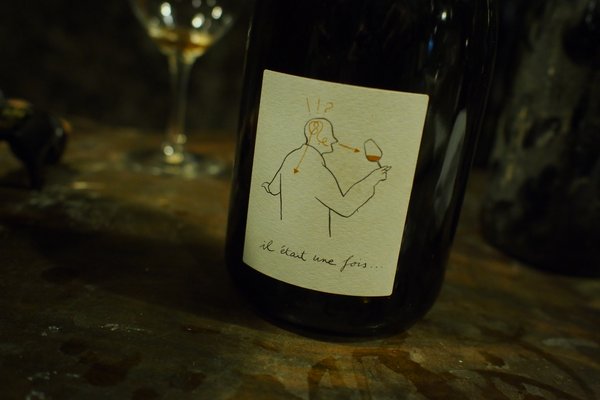
Jacques Selosse 'Il Etait une Fois' NV France
'Once upon a time': this is a Chardonnay that's made with 40-50 g
sugar, fortified to 18% alcohol and then left not topped up for 11
years. Sugar level has risen by concentration to 157 g/l. Smoky,
mineral and intense with sweetness and some spicy complexity. Notes
of tar and raisins. So complex. 93/100
VISITING CHAMPAGNE
 Part
1, JL Vergnon Part
1, JL Vergnon
 Part
2, Bruno Paillard Part
2, Bruno Paillard
 Part
3, Anselme Selosse Part
3, Anselme Selosse
 Part
4, Pierre Péters Part
4, Pierre Péters
 Part
5, Ulysse Collin Part
5, Ulysse Collin
 Part
6, Gosset Part
6, Gosset
 Part
7, De Sousa Part
7, De Sousa
Wines
tasted 04/16
Find these wines with wine-searcher.com
Back
to top
|

